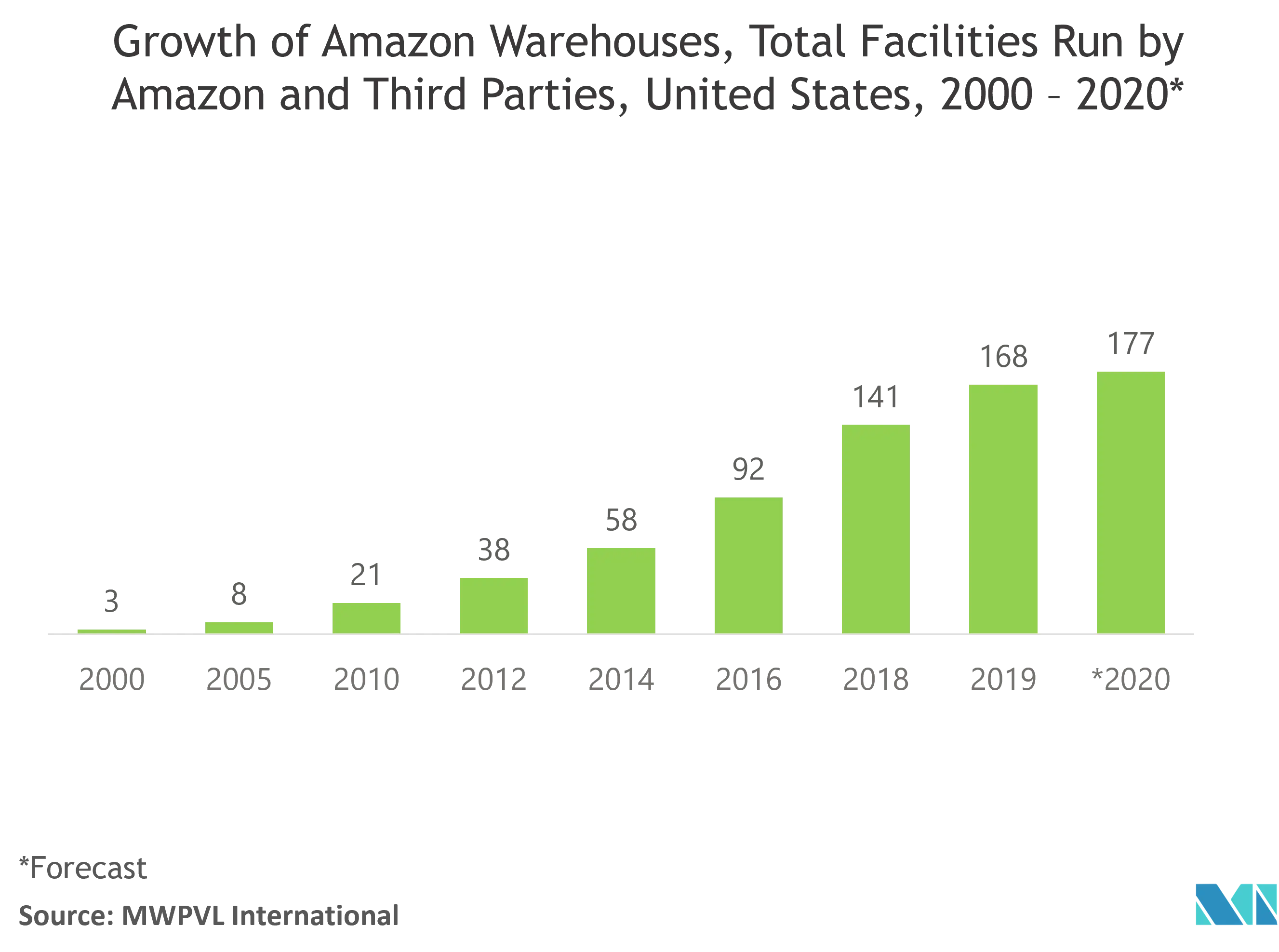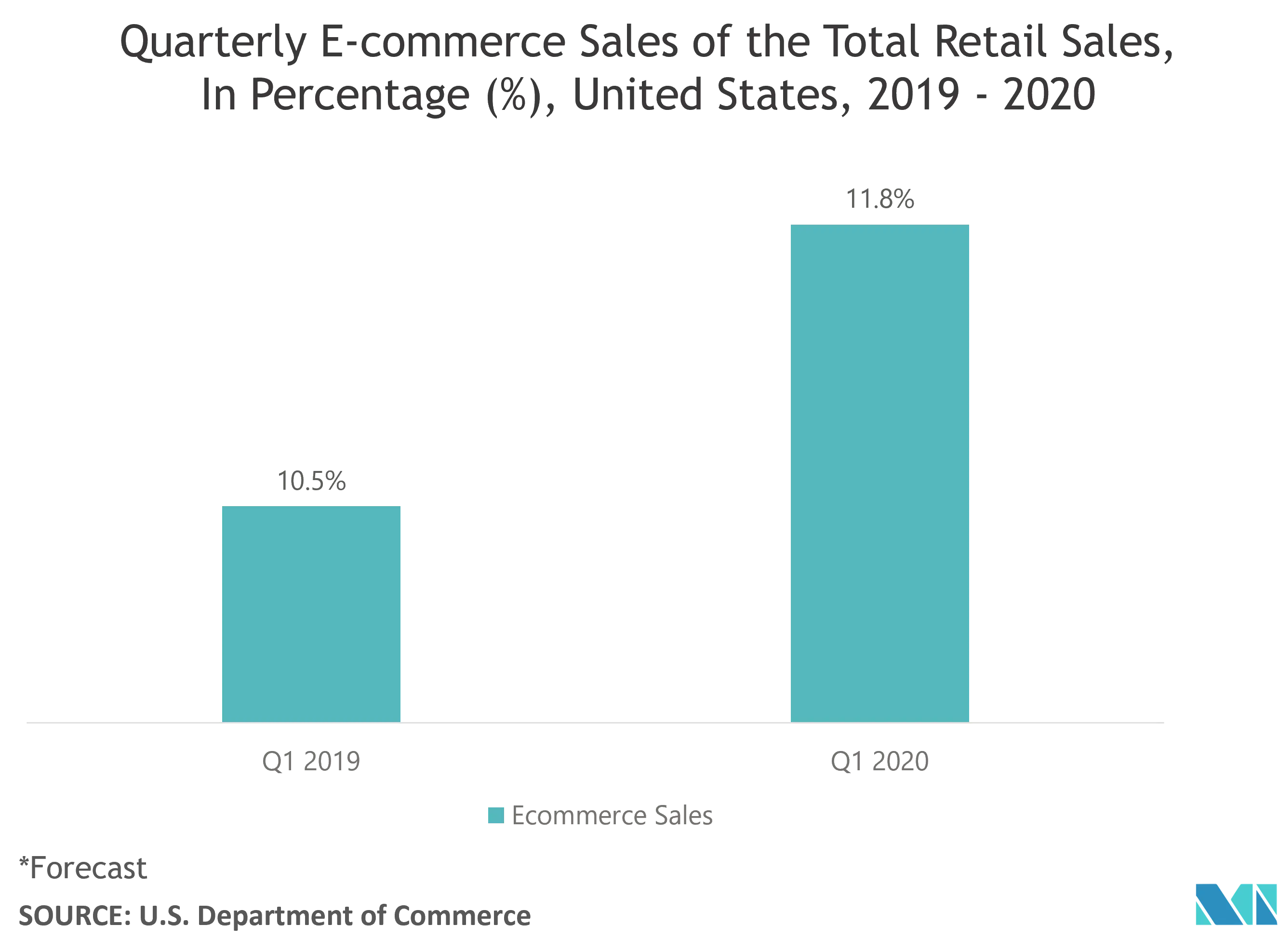Market Trends of North America Logistics Automation Industry
This section covers the major market trends shaping the North America Logistics Automation Market according to our research experts:
Among Hardware, Sortation System is Expected to Witness Significant Growth
- Sortation systems are witnessing increased demands from various regional end-user industries, such as post and parcel services, food and beverages, and the e-commerce industry. Factors such as increasing labor costs and changing consumer buying behavior have bolstered the demand for faster and more accurate delivery operations, which have, in turn, developed a considerable demand for automated sortation systems.
- Modern manufacturing facilities in the region rely on new technologies and innovations to produce higher quality products at faster speeds, with lower costs. Implementing smart software and hardware proves to be the only feasible way to survive in the current competitive market.
- Further, the growing adoption of industrial automation to enhance efficiency in the manufacturing and processing sectors is also expected to boost the adoption of sortation systems in the region. New technologies and innovations have further mandated the need for several regulations across the industries.
- For instance, the FDA Food Safety Modernization Act (FSMA) is transforming the operations of food companies by shifting the focus from responding to foodborne illness and foreign material contamination to preventing it. This makes the industry highly regulated to meet food safety norms that promote automation in material handling. This factor is expected to drive the sortation system in the food and beverage industry over the forecast period.
- The significant growth of the retail and e-commerce sector and warehouse expansion is another primary driver of the studied market growth. E-commerce sales contributed to about 14.3% of total retail sales in the third quarter of 2020, of which Amazon accounted for more than a third of all e-commerce sales in the United States.
- Most of the retailers in the region are planning to automate their warehouse establishments rather than expanding in such a high-priced rental environment. However, almost 80% of the warehouses in the region are still manually operated.

United States is Expected to Account for Major Market Share
- The United States is one of the largest and most advanced markets for automated solutions globally. The strong economy, with notable port traffic, increased e-commerce activity, and key manufacturing indices, all resulting in significant growth in manufacturing, drive the demand for automated solutions across the logistics sector in the country.
- Sectors, including retail, automotive, food and beverage, and pharmaceutical, are the largest sources of demand for automated logistics solutions in the country. Food and beverage is the largest industry and represents more than 35% of all US packaging shipments annually.
- This creates a significant demand for equipment, such as palletizers, unit load AGVs, tug AGVs, and sortation systems, which are extensively deployed in food and beverage manufacturing establishments. Moreover, the stringent food safety regulations and preference for low human intervention in the production process are expected to increase the demand for the food and beverage industry over the forecast period.
- The region is witnessing numerous partnerships and is relying on the latest technologies and innovations to manufacture a higher quality of products at quicker speeds and cheaper costs.
- For instance, recently, a principal American retail company, Kroger, started a partnership with the UK online supermarket, Ocado, to utilize its technology to handle warehouse operations, logistics, automation, and delivery route planning in the region. This partnership is set to transform the retail sector, with the aid of automation solutions, in the United States.
- Additionally, owing to low vacancy and a surge in the rental prices of warehouses, enterprises are progressively looking for smaller places to rent out for warehouse purposes. In order to optimize the productivity of these narrow spaces, they are expected to deploy more automated solutions soon.
- Also, the major companies with many warehouses and distribution units utilize acquisition strategies to reduce labor costs and increase their profitability. For instance, Amazon, the giant retail, has spent USD 775 million in 2012 to acquire a young robotics company called Kiva Systems that gave it ownership over a new breed of mobile robots. This investment gave a technical foundation for building new versions of warehouse robotics, setting the stage for a potential future of the robots.


